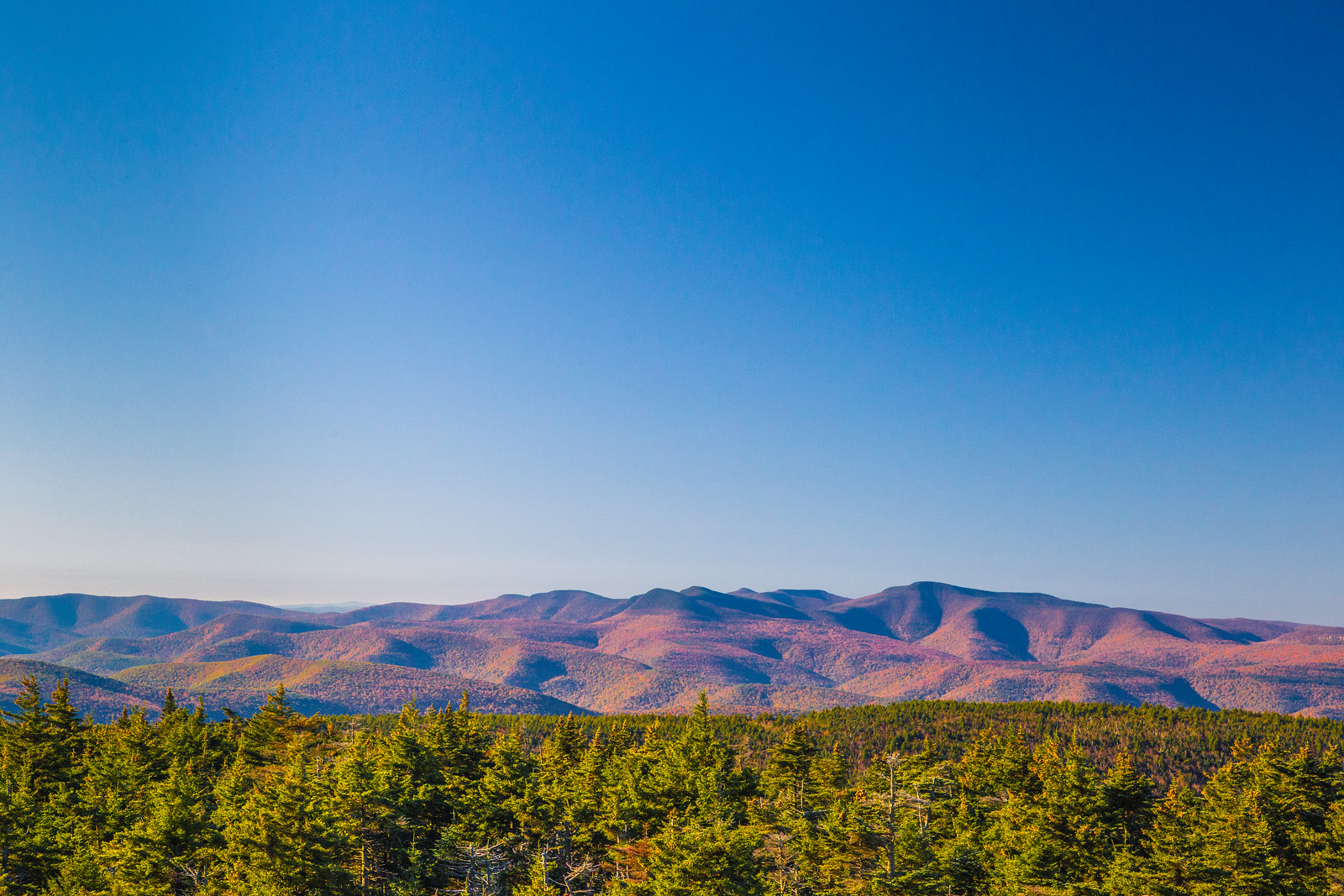 |
| Stoney Clove |
We summited four Catskills mountains that day: Indian Head, Twin, Sugarloaf and Plateau. The route we took was the the 13 mile northeastern section of the notorious Devil's Path - a rugged hiking trail who will offer you outstanding views and diverse terrain in exchange for about 9,000 feet of elevation gain. Legend says that the devil himself built the trail so he alone could climb the mountains to retreat from the world of men. I like to think that on his last journey across the range he came to his eternal rest at Devil's Tombstone (the name of the campground where we ended our hike) and reflected back on the torment his works had brought to man.
On the drive home, I remember thinking that I would never go back to the Catskills. They were far to difficult for me, and that I better stick to the New Jersey Highlands, which were more my speed because they didn't leave me feeling like I was run over by both a bus and a train. But I would end up hiking another six of the Catskill high peaks before the year was out.
 |
| Catskills over Mohonk Mountain House |
The very first thing that made me curious of the Catskills was their prominence. As I made my way hiking across the Hudson Highlands, I would always see those northern mountains in the distance, standing tall and proud on the horizon, ever so prominent and ever so blue. My eye was drawn to the distinctive shape they made. Devil's Path features such dramatic cuts in the range, and Kaaterskill High Peak's slanted rise and position in the middle of the escarpment never failed to catch my eye. During most hikes I did, a glimpse of them would be the grand finale, and they quickly became the backdrop to all my shots. They became my motif.
When I finally visited, there was a quality to the forest that had left an impression on me. The creeks and rivers of the area are picturesque, and their tireless flow form cloves, which are deep gorges that run straight through the mountains. Scattered through the trails, you will find exposed bedrock that shows the scars of glaciers gone by, a record of the time that went into creating this place. The Catskills are a lush green landscape. Each rocky ledge encountered reveals an epic expanse of peaks teeming with life. As you climb higher and higher, you will find yourself in a sea of mossy pine.
 |
| The Burroughs Range, As Seen From Hunter Mountain Firetower |
Three months after Devil's Path, me and my friends decided to go back to the Catskills to climb Panther. We had heard that there were many different ledges providing outstanding overlooks. I became fascinated with the mountain when I learned that it had a different origin story than the other peaks in the area. In the '70s, a geologist by the name Yngvar Isachsen theorized that the mountain was formed as a result of a meteorite strike. It was later proven the impact did in fact occur 375 million years ago, when a half-mile-wide meteorite struck the area with a force of 11 trillion tons of TNT.
Giant ledge provided me all the inspiration I need to return again.
 |
| Early Morning at Buck Ridge Lookout, West Kill Mountain |
Landscape photography is the art of finding a photograph. I don't create the scenes that I share. Instead, I simply capture what nature has already carved, cut and shaped. Certain places are so rich with these scenes that I am constantly itching to get back and see them in every season. In this sense, the Catskills are like the gift that keeps on giving. Sure, they aren't as tall and wild as the Adirondacks or as the White Mountains. But in their own right they are spectacular. They have the splendor to wake me up at 3 A.M. so I can see them soaked in the early morning light, or embrace the cold and summit them in the snow.
Maybe next time I'll tell you of the Shawangunk Ridge.
